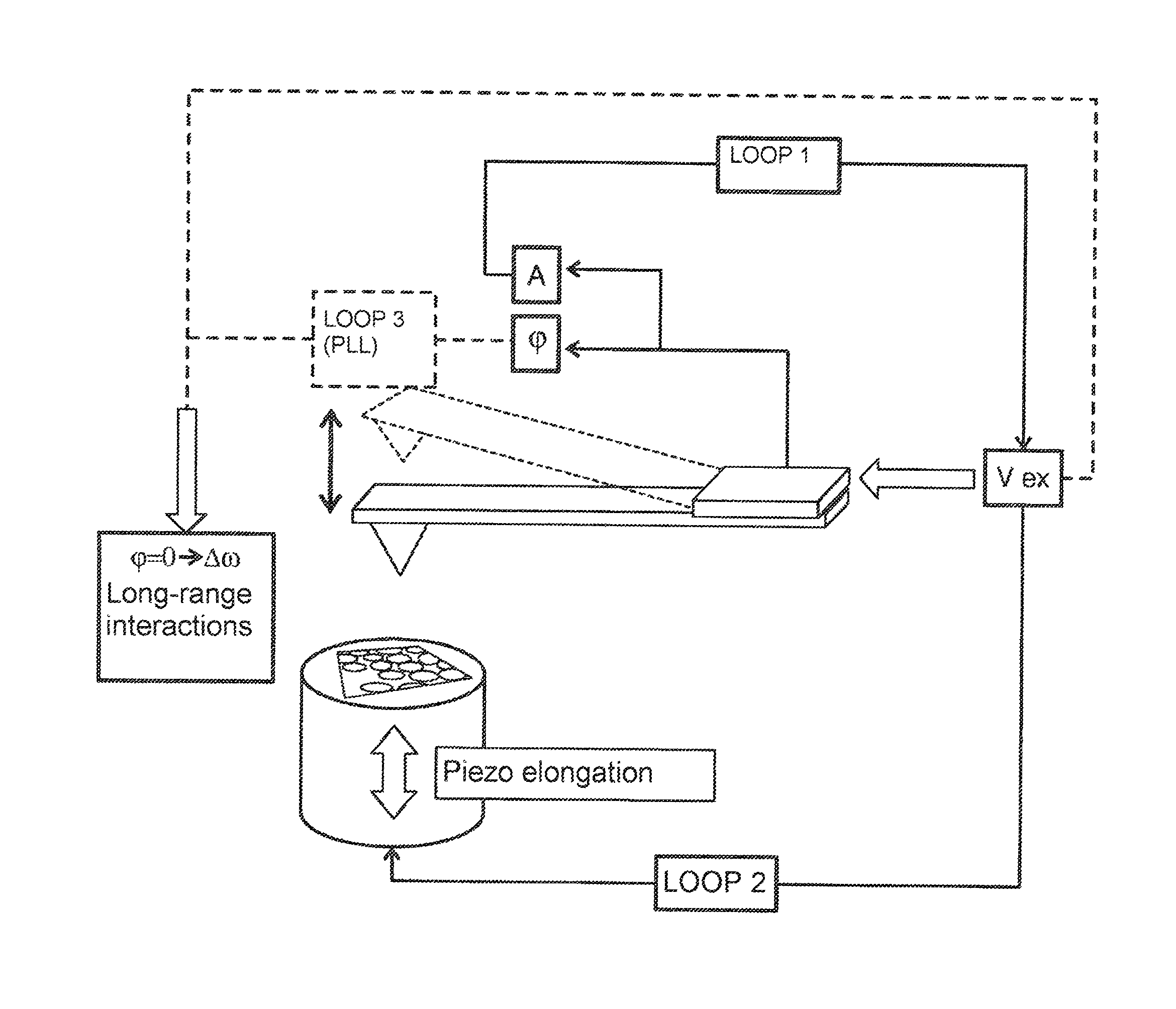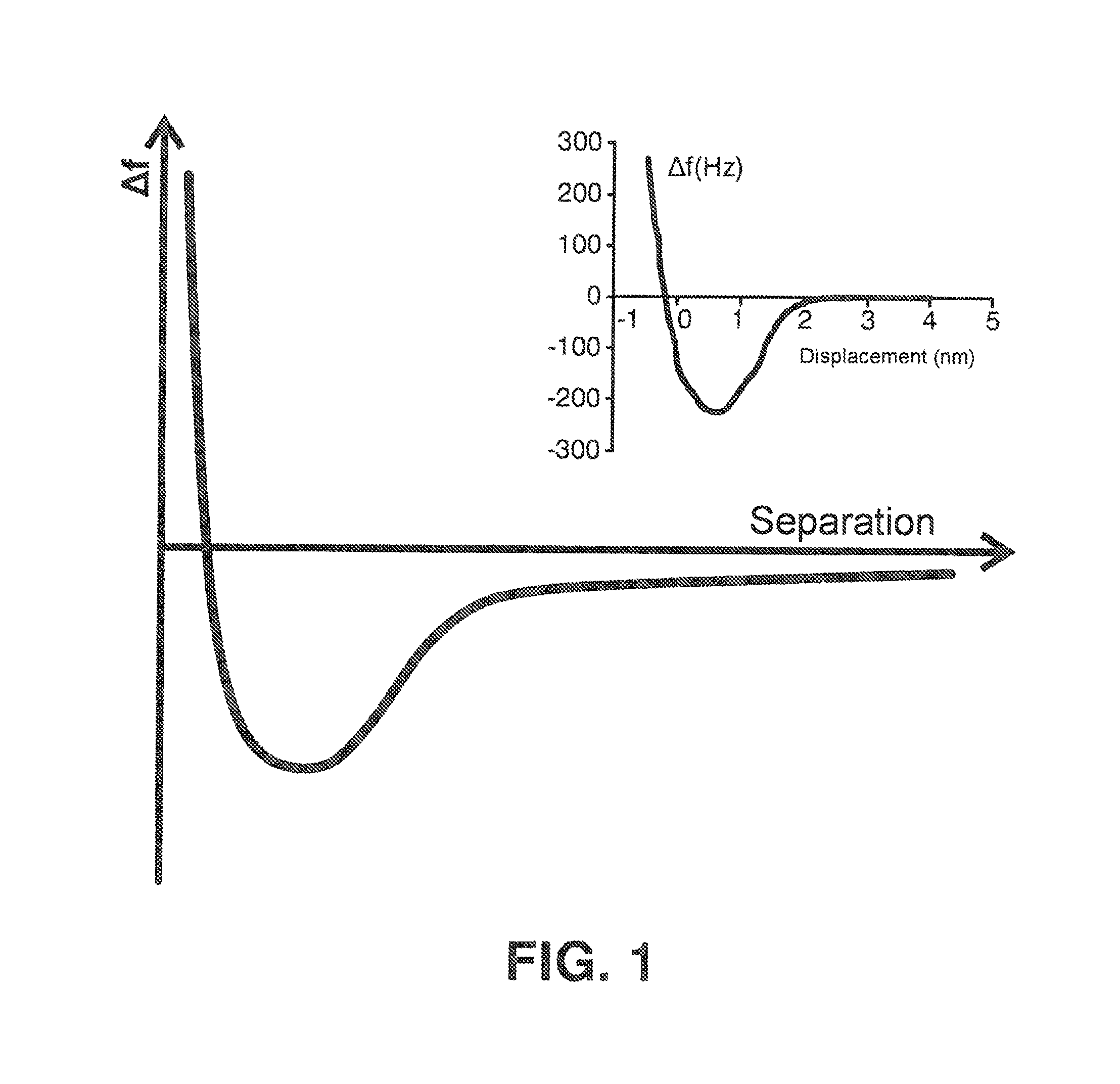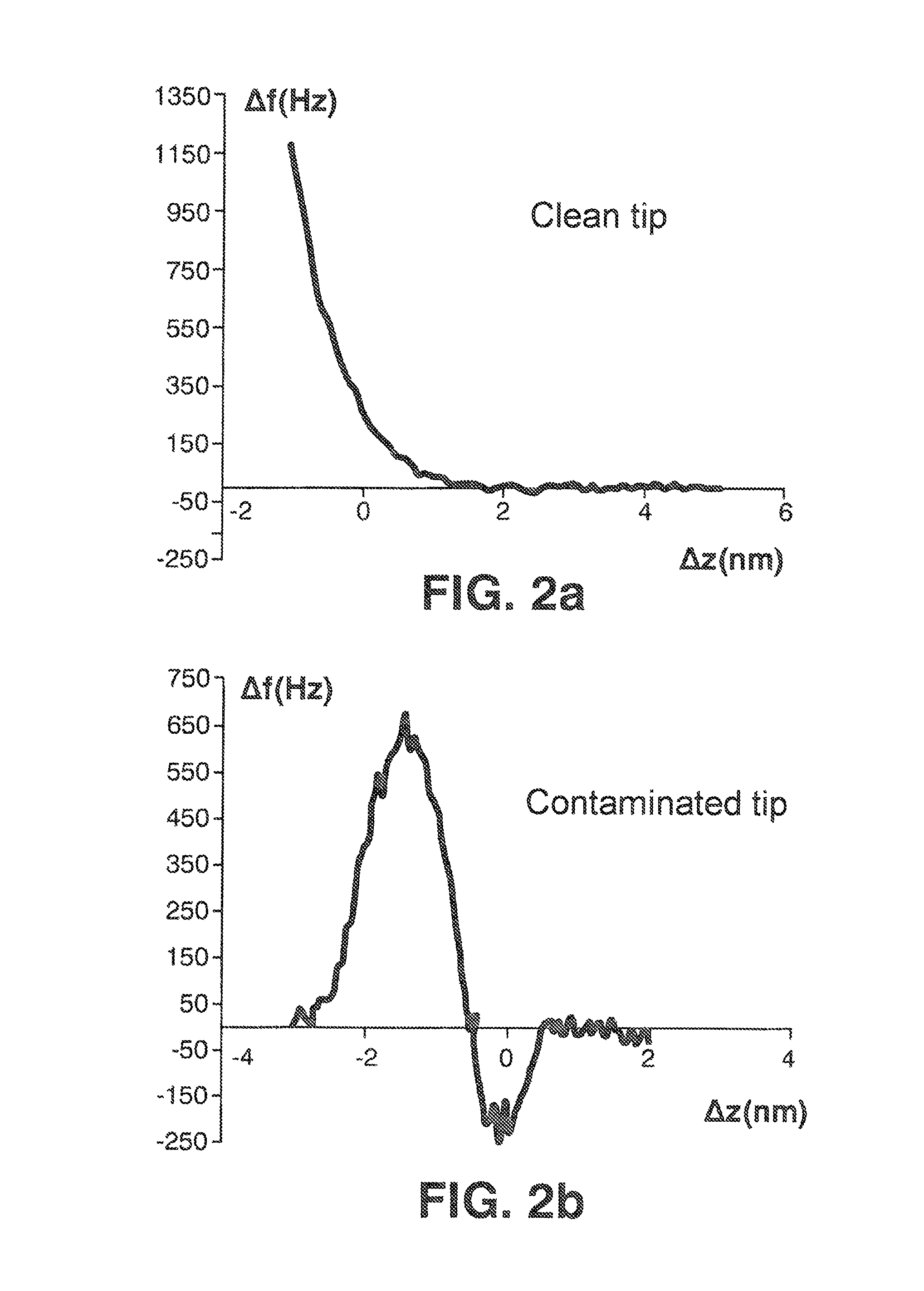Method for controlling a scanning microscope
a scanning microscope and control method technology, applied in the field ofatomic force microscopes, can solve the problems of affecting the study of system magnetic and electrical properties, affecting the study of system electrical properties, and the method of working is obviously highly invasive, and achieves the effects of reducing the risk of afm loss, and improving the study
- Summary
- Abstract
- Description
- Claims
- Application Information
AI Technical Summary
Benefits of technology
Problems solved by technology
Method used
Image
Examples
Embodiment Construction
[0018]The control method in the present invention uses two feedback loops. The first loop is responsible for keeping the oscillation amplitude of the micro-cantilever constant at all times (this falls within a range of 0.01 nm to 1000 nm) and for this purpose it uses the amplitude of the electrical signal introduced into the piezoelectric actuator which excites the micro-cantilever as the manipulated variable. The second loop has as the controlled variable the manipulated variable of the above, in other words, the amplitude of the excitation signal. The second loop uses the tip-sample distance as the manipulated variable. In this way, the output of this second loop reproduces the topography of the study sample (FIG. 3).
[0019]In a particular embodiment, a third feedback loop (loop 3) is included which allows the improvement in the image quality when the samples exhibit electrical and / or magnetic interactions to be increased. This feedback system is a phase-locked loop (PPL), which is...
PUM
 Login to View More
Login to View More Abstract
Description
Claims
Application Information
 Login to View More
Login to View More - R&D
- Intellectual Property
- Life Sciences
- Materials
- Tech Scout
- Unparalleled Data Quality
- Higher Quality Content
- 60% Fewer Hallucinations
Browse by: Latest US Patents, China's latest patents, Technical Efficacy Thesaurus, Application Domain, Technology Topic, Popular Technical Reports.
© 2025 PatSnap. All rights reserved.Legal|Privacy policy|Modern Slavery Act Transparency Statement|Sitemap|About US| Contact US: help@patsnap.com



